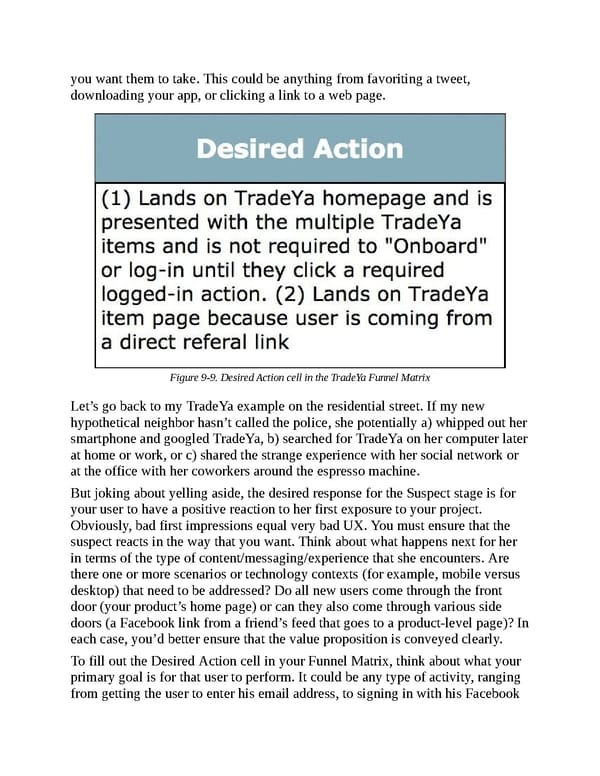you want them to take. This could be anything from favoriting a tweet, downloading your app, or clicking a link to a web page. Figure 9-9. Desired Action cell in the TradeYa Funnel Matrix Let’s go back to my TradeYa example on the residential street. If my new hypothetical neighbor hasn’t called the police, she potentially a) whipped out her smartphone and googled TradeYa, b) searched for TradeYa on her computer later at home or work, or c) shared the strange experience with her social network or at the office with her coworkers around the espresso machine. But joking about yelling aside, the desired response for the Suspect stage is for your user to have a positive reaction to her first exposure to your project. Obviously, bad first impressions equal very bad UX. You must ensure that the suspect reacts in the way that you want. Think about what happens next for her in terms of the type of content/messaging/experience that she encounters. Are there one or more scenarios or technology contexts (for example, mobile versus desktop) that need to be addressed? Do all new users come through the front door (your product’s home page) or can they also come through various side doors (a Facebook link from a friend’s feed that goes to a product-level page)? In each case, you’d better ensure that the value proposition is conveyed clearly. To fill out the Desired Action cell in your Funnel Matrix, think about what your primary goal is for that user to perform. It could be any type of activity, ranging from getting the user to enter his email address, to signing in with his Facebook
 UX Strategy: How to Devise Innovative Digital Products that People Want Page 255 Page 257
UX Strategy: How to Devise Innovative Digital Products that People Want Page 255 Page 257